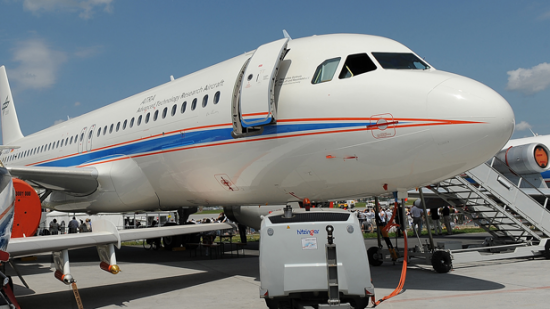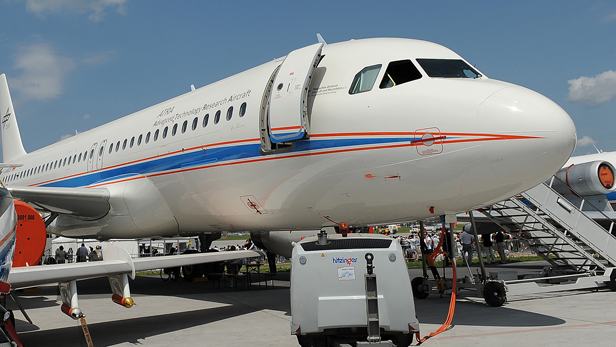Sustainable Energy
Fuel Cells Take to the Runway
Airbus will test a system that could reduce fuel consumption by 15 percent.



Hydrogen fuel cells are nowhere near powerful enough to replace a commercial aircraft’s engines, but that doesn’t mean they can’t help make air travel cleaner and more efficient.
Airbus plans flight tests of a fuel-cell system that could reduce fuel consumption by as much as 15 percent simply by powering an aircraft’s nonpropulsion systems—such as the lights, the entertainment system, and the environmental controls.
The 90-kilowatt hydrogen fuel cell will be installed into an A320 owned by the German Aerospace Center with the aim of commencing test flights by 2015.
The fuel cell will act as an auxiliary power source, says Jeff Rolf, vice president of business development and global services at Cleveland, Ohio-based Parker Aerospace, which is developing the system with Airbus. The idea is to remove the need to run the engines when the plane is on the ground, and to reduce the drain normally placed on the engines by nonpropulsion systems during flight.
Besides the lights, entertainment system, and environment controls, the fuel cell will power the avionics, the hydraulics, and the system used to keep fuel tanks safe by maintaining artificially low oxygen levels. Currently, an aircraft’s main engines produce electrical power for these systems during a flight while a separate auxiliary power unit—a small turbine often contained within the tail—powers them on the ground.
“The advantage of a fuel cell is, you have direct conversion of energy from chemical to electrical,” says Michel Loignon, an engineering manager at Parker Aerospace. “We’re taking a collection of reasonably mature technologies and integrating them.”
To accommodate the need for additional power, aircraft are often designed with slightly larger engines than is strictly necessary, increasing the overall weight of the aircraft. The weight of the fuel cell and its fuel supply would be more than offset by the removal of the auxiliary power unit and the fact that it generates power more efficiently, says Loignon.
There are other savings to be had. “[The fuel cell] breathes air, so it will displace oxygen and generate water,” says Rolf. This means the system could reduce the amount of water the aircraft needs to carry at takeoff; on some large airliners that water can weigh as much as 3,000 pounds. The oxygen could also help keep the fuel tanks stable. These savings will eventually be combined with electric-powered wheels for taxiing. “In the commercial implementation, we are hoping to achieve north of 15 percent” overall fuel savings, says Rolf.
“In the long term, it’s a good idea,” says William Crowther, an aerospace engineer at Manchester University, in the U.K. But he cautions that fuel cells can be bulky, which can sometimes be more of an issue than weight on an aircraft. He also notes that carrying hydrogen on board will introduce new safety challenges.